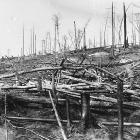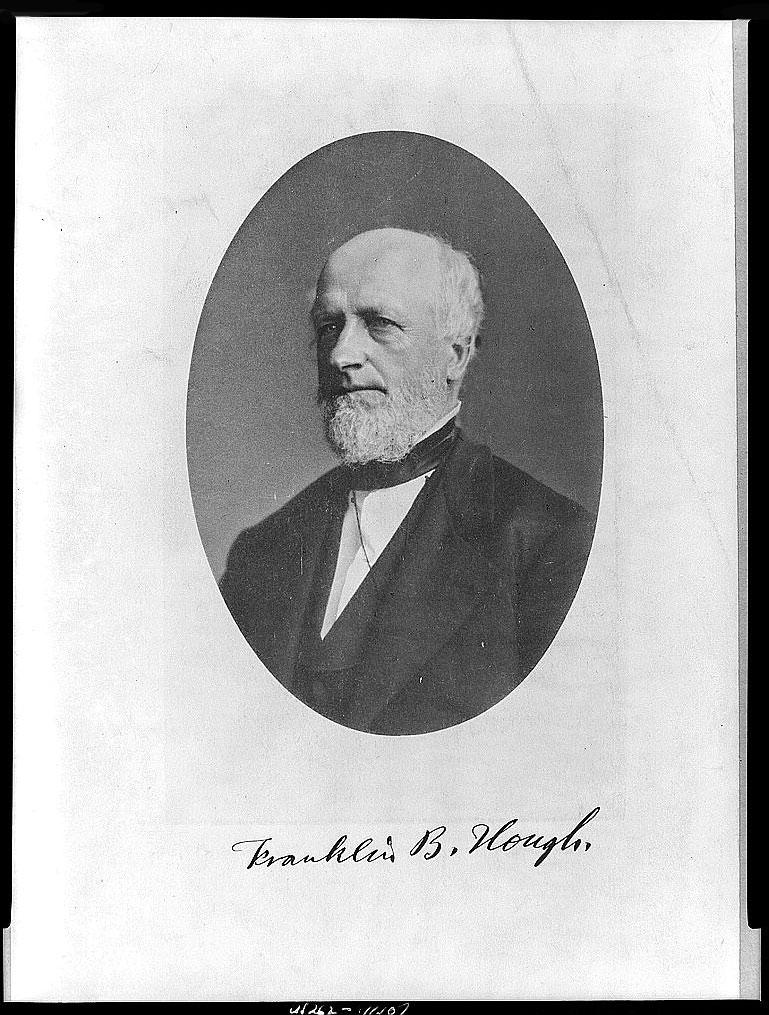
Portrait of Franklin B. Hough
Portrait of Franklin B. Hough
Franklin B. Hough’s presentation to the annual meeting of the American Association for the Advancement of Science (AAAS) would lead to a national investigation of forests and wildfires in America and, eventually, to the establishment of the USDA Forest Service.
Portrait of Franklin B. Hough
Date: ca 1880-1885
Region: New York, US
Courtesy of Library of Congress.
 This work is licensed under a Creative Commons Public Domain Mark 1.0 License.
This work is licensed under a Creative Commons Public Domain Mark 1.0 License.
When looking for the origins of wildland fire research in the Forest Service, forester C. E. (Mike) Hardy makes the case for 1922, when Harry Gisborne became the agency’s first full-time fire researcher. Leading fire historian Stephen Pyne argues that fire research originated under the leadership of Coert DuBois, who oversaw the first fire case study in 1911, the first use of statistical methods in analyzing fire reports in 1914, and the first fire behavior and fire effects research in around 1915.
But long before Gisborne and DuBois, physician Franklin B. Hough argued for protection of America’s forests and conducted the first national investigation of wildland fire on behalf of what would become the USDA Forest Service. Hough’s emphasis on forest health and sustainability and, ultimately, protection from wildland fire, set the stage for Gifford Pinchot’s early fire studies in 1898, and a Forest Service policy for fire suppression in 1905.
In his 1873 paper “On the Duty of Governments in the Preservation of Forests,” presented to the American Association for the Advancement of Science (AAAS), Hough warned that deforestation threatened the nation’s waterways and future growth, and he called upon AAAS to petition Congress for the protection, cultivation, and regulation of forested lands. Congress responded in 1876, providing funds to investigate the condition of the nation’s forested lands and to hire Hough as the nation’s first forestry agent.
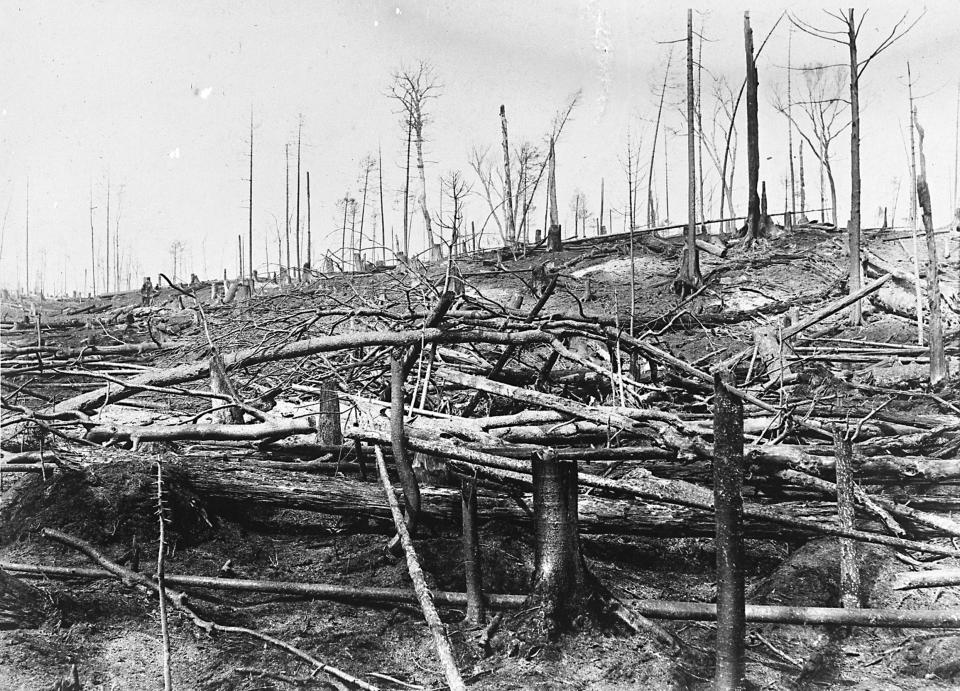
“There is no subject in Forestry [sic] more important than the prevention and control of forest fires,” Hough wrote in 1882, the same year he published data on wildland fires nationwide.
“There is no subject in Forestry [sic] more important than the prevention and control of forest fires,” Hough wrote in 1882, the same year he published data on wildland fires nationwide.
Publisher: New York State Archives
Date: ca 1900-1910
Photo courtesy of New York State Archives. New York [State]. Conservation Dept. Photographic prints and negatives, [ca. 1904-1949], 14297-96A, Box 175, #1475.
This work is used by permission of the copyright holder.
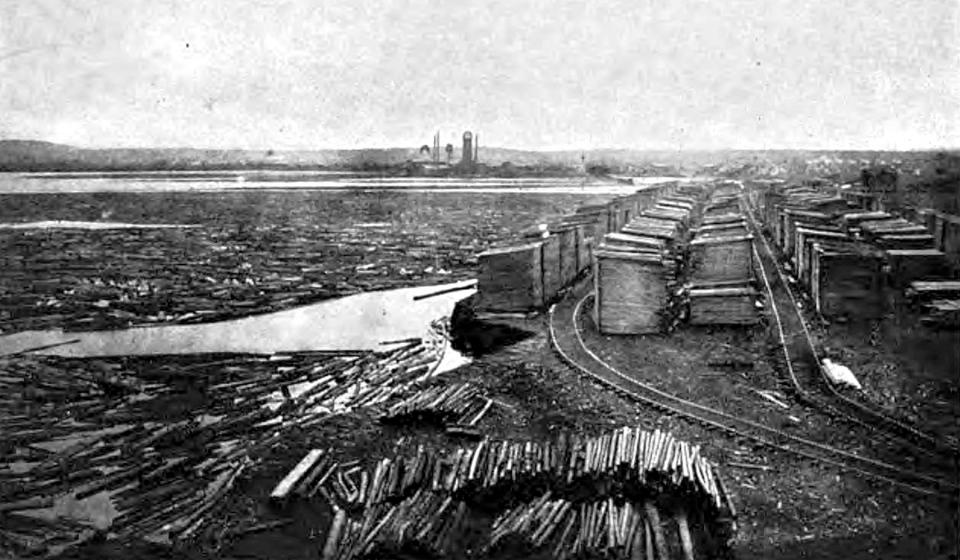
Hough also noticed a decrease in lumber production in New York and wondered how long forest supplies would last.
Hough also noticed a decrease in lumber production in New York and wondered how long forest supplies would last.
Raquette Pond, New York
Publisher: USDA, Bureau of Forestry
Date: ca. 1900
Region: New York, US
Courtesy of Richard Howe, from William F. Fox, A History of the Lumber Industry in the State of New York, U.S. Department of Agriculture, Bureau of Forestry, Bulletin 34 [Washington, DC: USGPO], 1902.
This work is used by permission of the copyright holder.
As part of his study of America’s forests, Hough issued a circular in 1880 to determine the number and causes of wildland fires nationwide, and to identify laws and other methods used for preventing and suppressing them. He published the results of his inquiry in Volume III of his Report on Forestry (1882), writing that, in some years, fire caused “a greater destruction to the forests than that occasioned by all the demands of industry put together.” Hough’s early investigations helped persuade opinion-makers that the nation’s forests needed protection, and that included protection from fire.
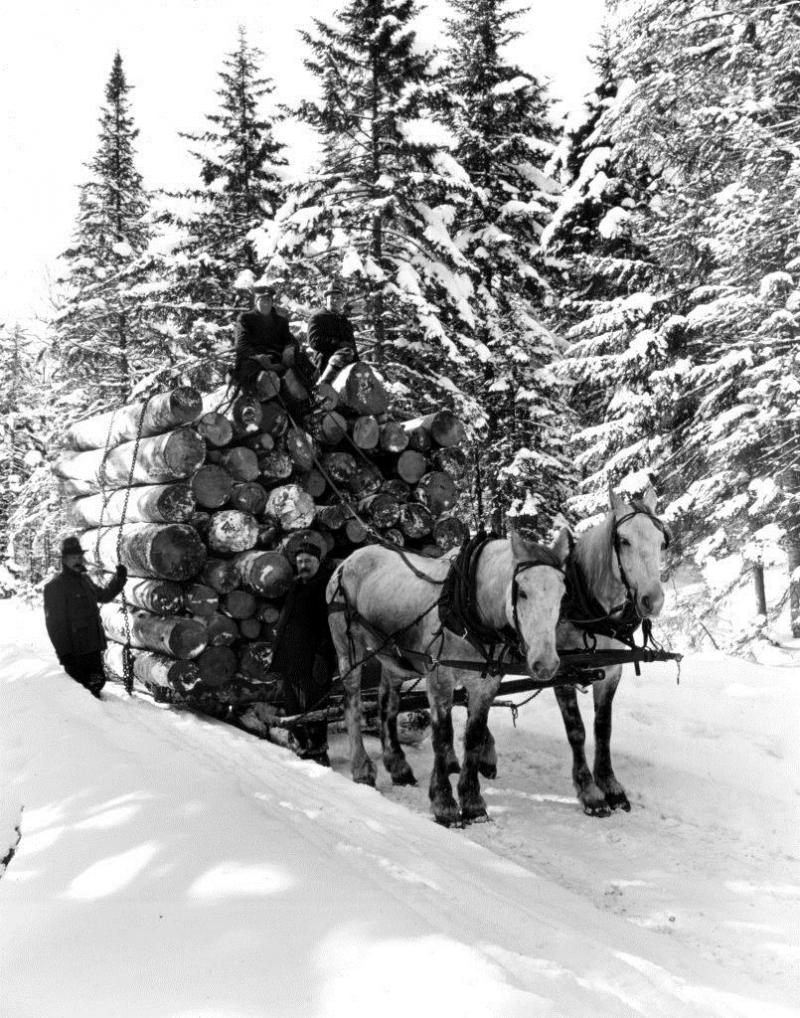
After working on the New York census in 1855 and 1865, Hough noticed a decline in forested lands and feared that excessive logging and deforestation would negatively impact the future growth of the nation.
After working on the New York census in 1855 and 1865, Hough noticed a decline in forested lands and feared that excessive logging and deforestation would negatively impact the future growth of the nation.
Logging Sled in the Adirondacks
Publisher: New York State Archives
Date: ca 1856
Region: New York, US
Photo courtesy of New York State Archives. New York [State]. Education Dept. Division of Visual Instruction. Instructional lantern slides, circa 1856-1939. A3045-78, #1704.
This work is used by permission of the copyright holder.
Hough wasn’t alone in advocating on behalf of America’s forests in the late nineteenth century, however. In 1864, George Perkins Marsh published Man and Nature, warning of the dangers of deforestation worldwide, influencing many of Hough’s generation. In his Report on the Lands of the Arid Regions of the United States (1878, 1879), John Wesley Powell reduced the sustainability of forests throughout the American West to one single question: “Can these forests be saved from fire?” If fires could be prevented, he argued, the annual growth would “more than replace that taken by man.” Powell also believed that because some tribes used fire when hunting, the “removal of the Indians from the country will further protect the forests.” Soon thereafter, Charles S. Sargent compiled his Report on the Forests of America (1884) on behalf of the 1880 U.S. Census. In his survey of fires, Sargent identified farmers clearing land, careless hunters, and the railroads as causing the greatest number of wildfires (although he did not call for any of them to be removed).
Marsh, Powell, Sargent, and Hough raised awareness of the significant role played by the nation’s forested lands, and of the importance of preventing and suppressing wildland fires. And yet, as noted in 1898 by Gifford Pinchot when he became chief of the Bureau of Forestry, little was known about forest fires and their effect on the composition and reproduction of forests. To address this need, Pinchot initiated a study of forest fires reported in American newspapers, and arranged for on-the-ground investigations of the extent, causes, and/or effects of fires in several states. As Pinchot would later write, he intended that “carefully gathered facts” should replace “the vague general notions that now exist about forest fires.” While these investigations may not qualify as fundamental research by today’s standards, these early studies laid the foundation for both the research and management policies that followed.
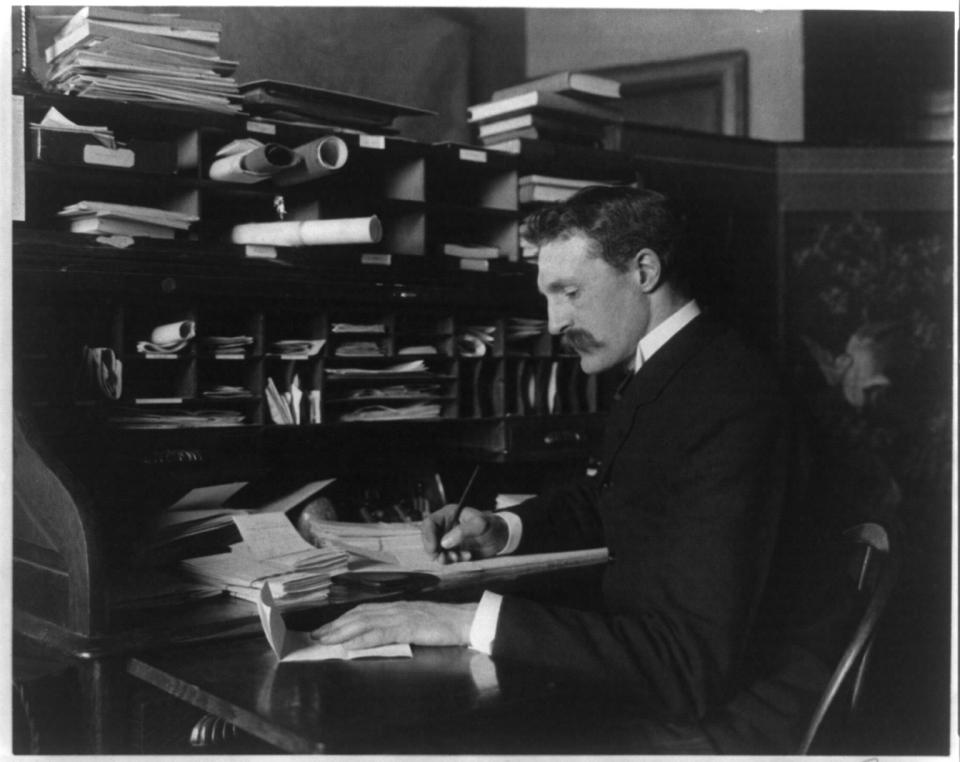
When Gifford Pinchot became chief of the Bureau of Forestry in 1898 and, later, the new USDA Forest Service in 1905, he hoped that investigations into wildland fires would lead to more effective methods of prevention and control nationwide.
When Gifford Pinchot became chief of the Bureau of Forestry in 1898 and, later, the new USDA Forest Service in 1905, he hoped that investigations into wildland fires would lead to more effective methods of prevention and control nationwide.
Courtesy of Library of Congress.
 This work is licensed under a Creative Commons Public Domain Mark 1.0 License.
This work is licensed under a Creative Commons Public Domain Mark 1.0 License.
When the Bureau of Forestry became the USDA Forest Service in 1905, one of the new agency’s highest priorities became the suppression of all wildland fires. The large fires of 1910 increased the agency’s sense of urgency. It would take the 1963 Leopold Report, issued by the National Park Service, advocates speaking out on the importance of wilderness and other wildlands much as Hough had done, and new ecology-related research to raise awareness about the important role fire plays in the health and sustainability of the nation’s fire-dependent landscapes. The Forest Service continues to protect the nation’s wildlands, as Hough initially had called for, but to this end it now allows some fires to burn.
How to cite
Smith, Diane M. “Sustainability and the Origins of Wildland Fire Research.” Environment & Society Portal, Arcadia (2015), no. 13. Rachel Carson Center for Environment and Society. https://doi.org/10.5282/rcc/7185.
ISSN 2199-3408
Environment & Society Portal, Arcadia
 This work is licensed under a Creative Commons Attribution-NonCommercial-ShareAlike 4.0 International License.
This work is licensed under a Creative Commons Attribution-NonCommercial-ShareAlike 4.0 International License.
2015 Diane M. Smith
This refers only to the text and does not include any image rights.
Please click on the images to view their individual rights status.
- Hardy, C. E. The Gisborne Era of Forest Fire Research: Legacy of a Pioneer. Washington, DC: USDA Forest Service, 1983.
- Hough, Franklin B. “On the Duty of Governments in the Preservation of Forests.” In Proceedings of the American Association for the Advancement of Science, Portland Meeting, August, 1873.
- Hough, Franklin B. Report on Forestry. Washington, DC: Government Printing Office, 1882.
- Pinchot, Gifford. “Report of the Chief of the Division of Forestry.” In Annual Reports of the Department of Agriculture for the Fiscal Year Ended June 30, 1898. Washington, DC: Government Printing Office, 1898.
- Powell, J. W. Lands of the Arid Region of the United States. 2nd Edition. Washington, DC: Government Printing Office, 1879.
- Sargent, Charles S. Report on the Forests of North America (Exclusive of Mexico). Washington, DC: Government Printing Office, 1884.
- Pyne, Stephen J. Fire in America: A Cultural History of Wildland and Rural Fire. Seattle, WA: University of Washington Press, 1997.



